One of the first things many off-roaders do is replace their tires. The factory tires may be adequate, but they aren't always the best for everyday off-road use. If you're curious to know the biggest tire size that will fit a stock 4Runner, we researched and looked for answers, and here is what we found.
The biggest tire size it can fit is 32" (275/70R17). On stock suspension, switching to a tiny 32′′ tire should be no problem. Verify that the tire is a smaller 32-inch tire and not a larger one.
Keep reading as we explain what happens when you go beyond the 32" tire size. We'll also talk about the factors to consider in choosing the wheel size of your 4Runner and what to do when you have a bigger tire size than the maximum stock fit. Additionally, we'll tell you how much the tires of this vehicle cost and the importance of rotating your tires.
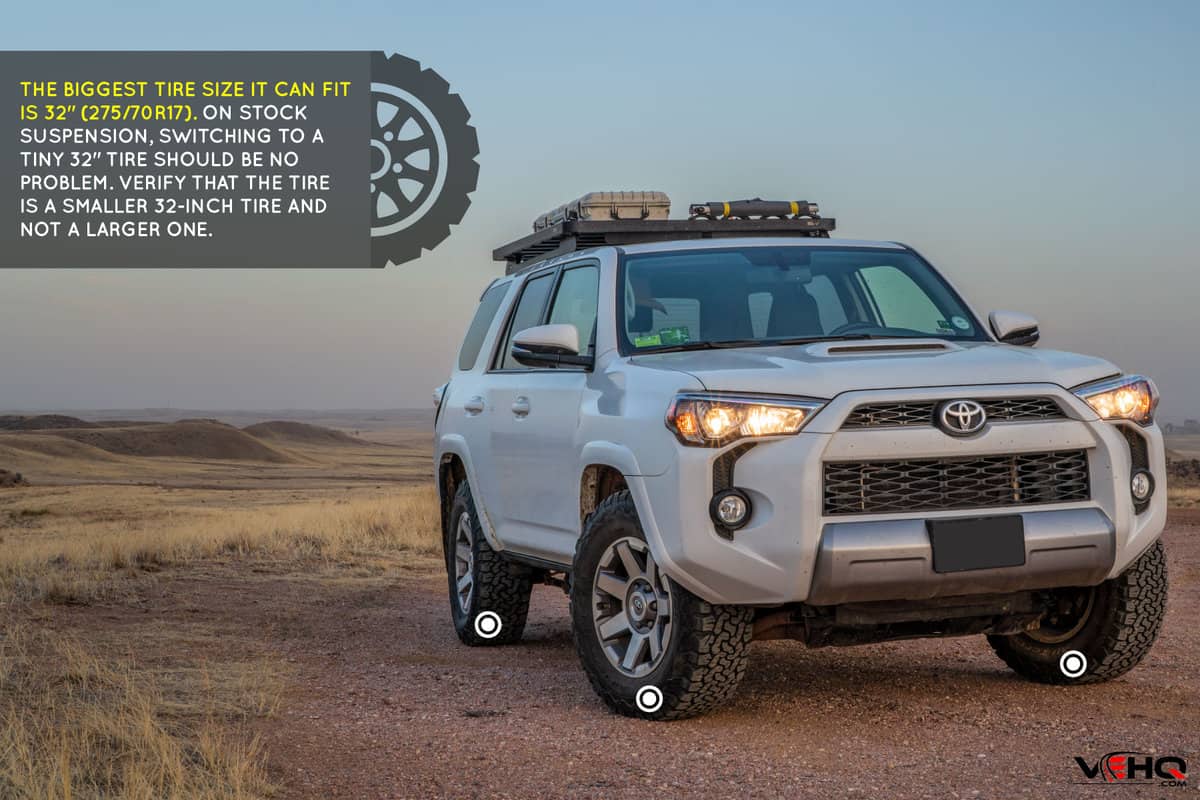
What Happens When The Tire Size Goes Beyond The Biggest Tire Your Stock 4Runner Can Fit?
Here are some possible scenarios if you upgrade your tires to a larger size than the biggest it can fit:
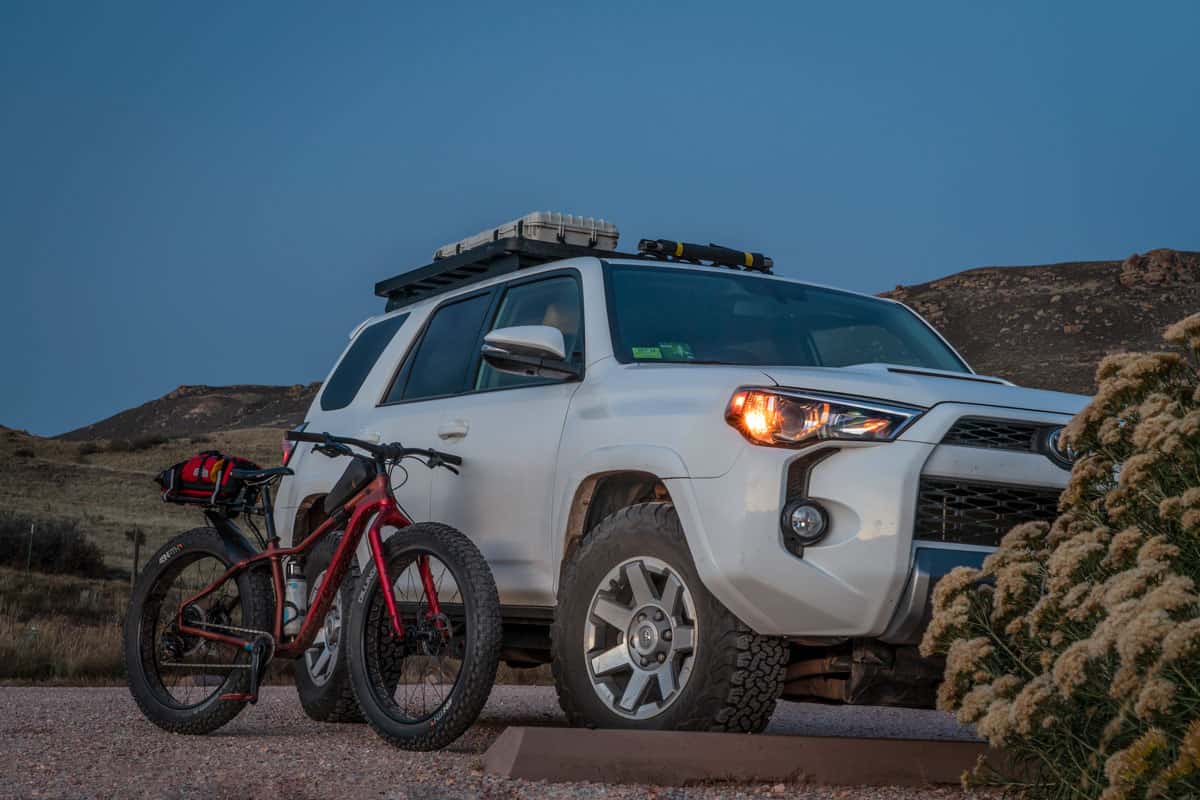
You Need A Lift/Leveling Kit To Fit It
- The majority of owners upgrade to a 33" tire (285/70R17). You need a leveling system or a lift kit to upgrade to this size.
- A 33-inch tire should be fine if you have a 3" raise in the front, but certain 33-inch tires will rub even with this lift. Every tire is unique because of the tread pattern and overall design, which could be perplexing.
- You might have some rubbing on the fender liners with 33-inch tires and a 3-inch raise, but it's a really simple remedy that nobody will see.
- Avoid using 34-inch or large 33-inch tires if you don't want to have to cut the BMC, the well, or the fender liners. This is because there will be severe rubbing all around. Thirty-four-inch tires (285/75R17) will rub against the body, front fender liners, body mounts, and perhaps even the firewall.
It Can Affect The Performance Of Your Vehicle
- Before switching to larger tires, you should be aware that additional weight and rolling resistance nearly always have a detrimental impact on on-road performance, specifically mpg and acceleration. There is no getting around the more tire, the lower the mpg rule.
- Depending on the specific tire and size you choose to use, the difference could be negligible or huge.
- Re-gearing of the differentials is also required once the tire diameter is sufficiently increased (> 33") to get the vehicle back into the right overall gearing ratio.
- In typical driving conditions, larger tires can cause the car to lug out of the power band and reduce your overall gear ratio.
- Loss of power is another obvious problem with larger tires. Your rear axle ratio decreases when the diameter of your wheels increases. When you accelerate, this will result in less torque.
- A few miles per gallon can be lost due to larger tires, thicker tread, and inflated tires (if you were off-roading). With factory-specified wheels and tires, your drivetrain is designed to perform at its peak. Changing to different sizes won't harm anything, but your engine and transmission will use a little more fuel because of drag and the more power they need.
How To Fit Larger Tires To Your 4Runner
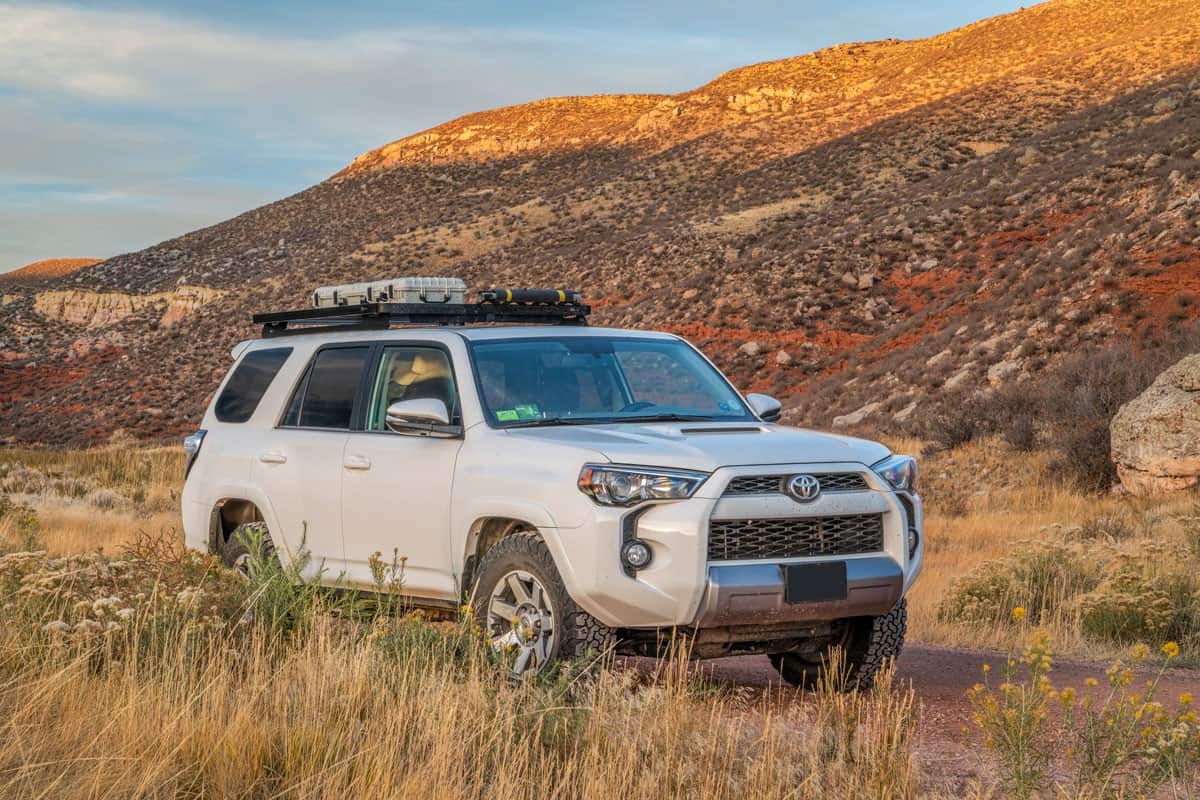
Here is how you can fit a 33" or larger tire size to your 4th gen 4Runner:
- Relocate the inner fender lines by removing the mounting bolts that link the bottom of the front bumper to the front of the fender liner. This way, you can have more space that can fit bigger tires.
- Cut the edge of your front mud flap. The original mud flaps are large and take up a lot of space where it counts the most. They are composed of tough plastic. Sadly, you must let them go.
- The rear flaps require a little more work. If you want to remove them entirely, you can. The issue is that they obstruct a sizable open space inside the rear bumper. Dirt and debris can quickly accumulate there after you remove them.
- Your 4Runner's front fenders will need to be somewhat chopped off to accommodate larger tires. The good news is that you can leave the actual metal fenders alone. On the bottom corner of the front bumper, trimming is required.
- The body is mounted to a frame section that protrudes directly behind the front wheels. Your tires can touch it based on factors like lift height, tire size, wheel offset, and alignment requirements.
- If so, you'll have to remove a corner from this body mount. People have been performing this alteration for years with no negative consequences, and it is usually regarded as completely safe.
- However, it is best to leave removing the body mount to a metal welding and cutting expert. Even if you could theoretically just cut it and leave the end exposed, that would let impurities inside. Toyota vehicles don't need any additional assistance because their rusting frames are already a significant concern.
What Factors Should You Consider In Choosing The Best Tire Size For Your 4Runner?
When selecting a good 4Runner road tire, there are still a few things to take into account. You'll probably have to give some characteristics priority over others, as there are so many different factors to consider when buying a solid road tire.
The majority of consumers consider cost, comfort, and poor weather capability when choosing road tires. Fortunately, the majority of well-known manufacturers offer 4Runner tires that concentrate specifically on those areas.
How Much Does A 4Runner Tire Cost?
Depending on the tire size and type you choose for your 4Runner, tires for that vehicle might cost anywhere from $120 to $350 or more.
Why Is It Important To Rotate The Wheels Of Your 4Runner? [And When?]
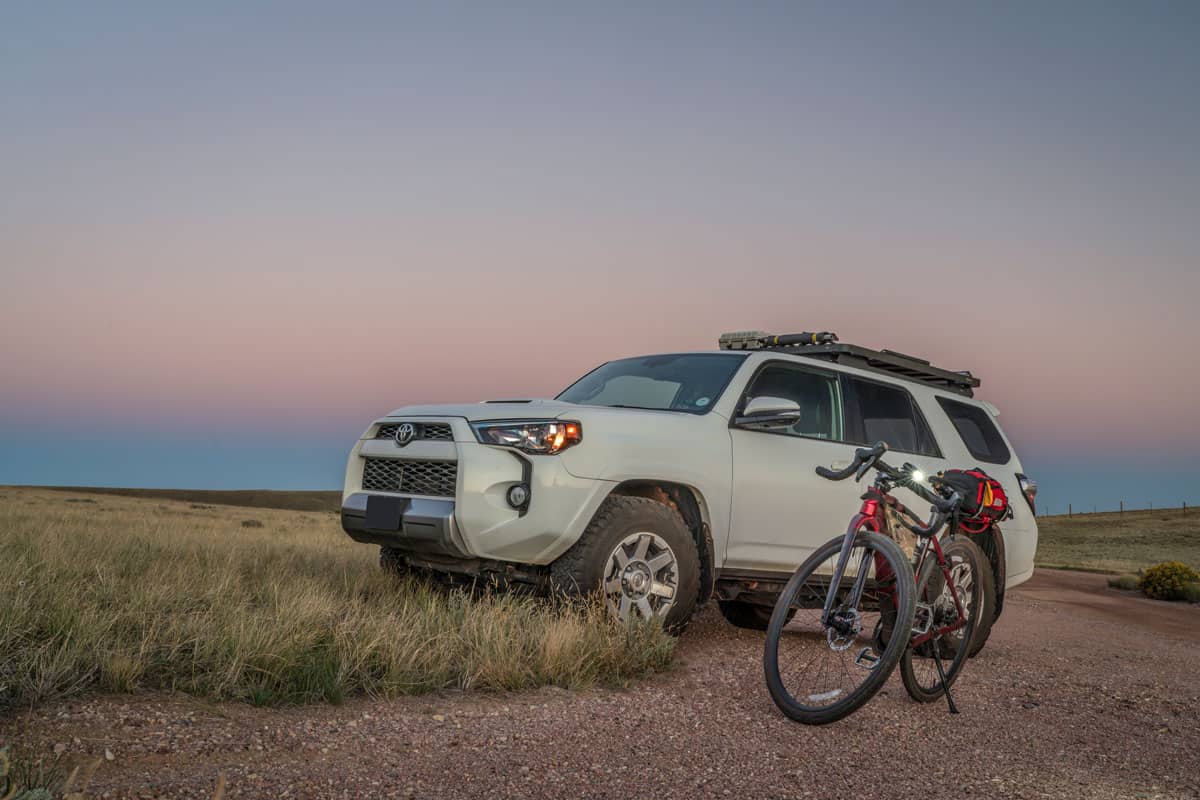
For one simple reason—because the front and rear tires wear differently—tire rotations are a necessary maintenance task for 4Runners. Having your 4Runner's tires rotated can help to ensure that all four of them last substantially longer and wear equally.
Toyota advises rotating the tires on your 4Runner every 3,000 to 5,000 miles. The majority of owners discover that scheduling a tire rotation along with an oil change is a wise move.
Toyota also suggests rotating tires in a particular way. The fronts should be moved to the rear in a cross pattern, while the rears should move forward directly.
On-Road Vs. Off-Road Vs. All-Terrain: Which Should You Choose?
If you have a hard time choosing what tire type you need for your 4Runner, there are several options available, including all-terrain, on-road, and off-road tires, but what are the differences between them, and which is best for your vehicle? Let's find out!
On-Road
- On-road tires are the best option for city and highway driving because you can depend on them for a quiet, comfortable ride.
- These tires are just regular car tires on a larger scale, as they need to be strong enough to support bigger cars.
- Tires designed for on-road use have high-performance tread patterns, making them more expensive than those made for more aggressive use.
Off-Road
- Off-road tires are built with substantially bigger and widely spread treads for better traction on varied terrains like mud, uneven rocks, or unpredictable bumps/trenches.
- Quality off-road tires have a significantly stronger carcass than on-road tires.
- Excessive road use will result in greater wear and tear on off-road tires, so they should be used for those enthusiasts who are driving in rough terrain 80% of the time.
All Terrain
- All-terrain tires are designed for good traction, capable of maneuvering gravel and mud yet provide a comfortable, quiet ride on town roads.
- All-terrain tires are a great option for 4x4 vehicles that occasionally meet rough yet navigable terrain.
- Due to its versatile performance, you need not be concerned about the tire's wear. All-terrain tires can potentially travel more than 50,000 miles before you need to replace them.
In Conclusion
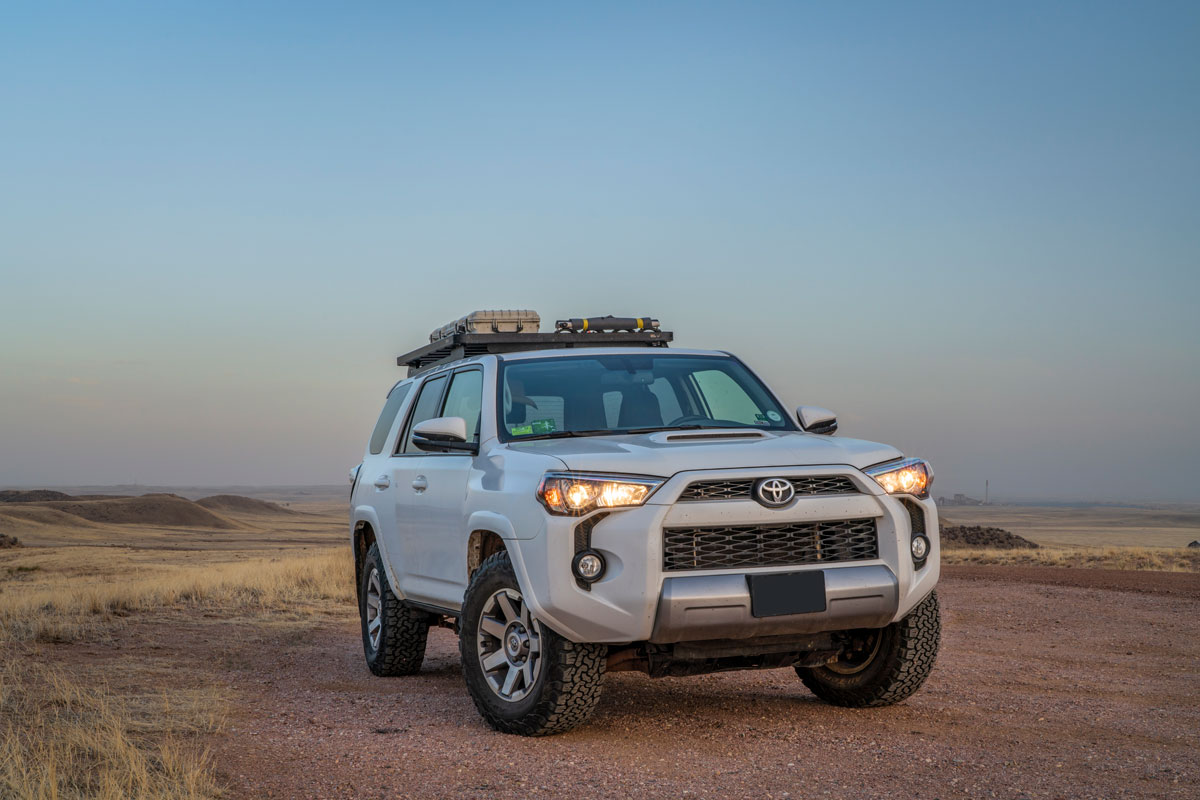
If you don't want the hassle of using a leveling or lift kit, then the biggest stock tire size for your 4Runner is 32" (275/70R17).
Additionally, if you want to go a size bigger, then you should be ready to make modifications to your vehicle. These modifications involve your BMC, fender lines, and wells.
If you enjoyed this post, you can check out other articles here:
Toyota 4Runner Rattling Noise When Accelerating - What To Do?
